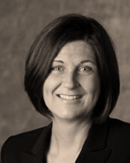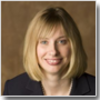 If you are in retirement (or close to retirement), you are most certainly concerned about the recent market volatility. You are likely wondering how your investment portfolio might be structured to provide the income you need without putting the portfolio in a vulnerable position.
If you are in retirement (or close to retirement), you are most certainly concerned about the recent market volatility. You are likely wondering how your investment portfolio might be structured to provide the income you need without putting the portfolio in a vulnerable position.
The Bucket Strategy (not to be confused with the “Bucket List”) is another way to describe a cash distribution method to provide you with income from your nest egg during any kind of market cycle.
Consider that we each have 4 buckets and that every investment within your portfolio fits into one of these buckets. The idea is that this strategy can provide cash flow, even if equity markets drop or stay low for extended periods of time.
Bucket 1: The first bucket is labeled 1-year or less. This is the cash and short term securities that mature in less than one year to support the cash flow needs for the client for the first 12 months.
Bucket 2: The second bucket would start generating cash flow in the 13 month – 36th month or years 2 and 3. This contains short-term bonds and fixed income type securities that have a small amount of volatility and are primarily for preservation of capital. The holdings in this bucket do pass on interest income that flows into the first bucket.
Bucket 3: The third bucket is structured to generate cash flow needs in years 4 and 5 and primarily contains strategic income and higher yielding bonds (lower quality, longer maturing and international type bonds). However, they do pass on interest income that flows into the first bucket.
Bucket 4: The fourth bucket is made up of equities (stock investments) and other assets that have higher volatility like gold, real estate, commodities etc. Many of these assets produce dividends to help replenish the first bucket, if the dividends are set to pay in cash vs. reinvest.
The bucket strategy is designed to provide enough cash flow to get through roughly a 6- or 7-year period without needing to liquidate the stock portion of the portfolio. This should provide you with the confidence and consistent income needed to enjoy your retirement and work on your bucket list!
Talk to your financial planner to see how the bucket strategy might work for you.
Any information is not a complete summary or statement of all available data necessary for making an investment decision and does not constitute a recommendation. Any opinions are those of Center for Financial Planning, Inc., and not necessarily those of RJFS or Raymond James. Investments mentioned may not be suitable for all investors. There is an inverse relationship between interest rate movements and bond prices. Generally, when interest rates rise, bond prices fall and when interest rates fall, bond prices generally rise. High-yield (below investment grade) bonds are not suitable for all investors. When appropriate, these bonds should only comprise a modest portion of your portfolio. Please note that international investing involves special risks, including currency fluctuations, differing financial accounting standards, and possible political and economic volatility. Gold is subject to the special risks associated with investing in precious metals, including but not limited to: price may be subject to wide fluctuation; the market is relatively limited; the sources are concentrated in countries that have the potential for instability; and the market is unregulated. Be advised that investments in real estate and in REITs have various risks, including possible lack of liquidity and devaluation based on adverse economic and regulatory changes. Commodities and currencies investing are generally considered speculative because of the significant potential for investment loss. Their markets are likely to be volatile and there may be sharp price fluctuations even during periods when prices overall are rising. Dividends are not guaranteed and must be authorized by the company’s board of directors. Every investor’s situation is unique and you should consider your investment goals, risk tolerance and time horizon before making any investment. Investing involves risk and you may incur a profit or loss regardless of strategy selected. The forgoing is not a recommendation to buy or sell any individual security or any combination of securities. Be sure to contact a qualified professional regarding your particular situation before making any investment decision.
 Improving our health – physical or financial – may mean changing the habits we learned as children. What was your family’s attitude about money? Is yours still the same? Financial health is so much more than how much money you make or save: it’s about who you are and what you want from life. The bottom line is that it’s “All About You.”
Improving our health – physical or financial – may mean changing the habits we learned as children. What was your family’s attitude about money? Is yours still the same? Financial health is so much more than how much money you make or save: it’s about who you are and what you want from life. The bottom line is that it’s “All About You.” 











